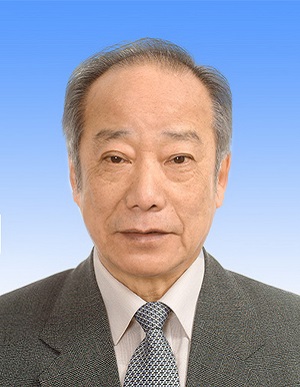
Dongcai Liang, Ph.D, Prof., CASM
-
Principal Investigator
State Key Laboratory of Biomacromolecules, IBP
Research Interests: Structural biology
Email: dcliang@ibp.ac.cn
Tel: 010-64888506
Address: 15 Datun Road, Chaoyang District, Beijing, 100101, China
Chinese personal homepage
- Biography
1955 Department of Chemistry of Zhongshang University,Bachelor Degree
1960 Organo-Element Compounds, USSR Academy of Sciences, Moscow, Doctor Degree
1965-1967, Royal Institution and Oxford University in UK,Visiting Scholar
Liang was elected as a member of Chinese Academy of Sciences in 1980 and a fellow of the Third World Academy of Sciences in 1985. Liang is presently an investigator and also a mentor of Ph. D students of the Institute of Biophysics, Chinese Academy of Sciences. Liang serves as the Director ofthe Institute of Biophysics, Chinese Academy of Sciences from 1983 to 1986, and the director of National Natural Science Foundation from 1986 to 1995. Liang has ever published over 140 research articles in natural science and a specialized book named “the basis of X-ray Crystallography”.
- Awards
Chinese National Scientific Prize, Second Rank, 1982
Chinese National Scientific Prize, Second Rank, 1989
Scientific Prize of Chinese Academy of Sciences, First Rank,1987 and Second Ranks, 1986 and 1992
Wang Danping Science Award, 1992
《Ho Leung Ho Lee》Prize,1994
Scientific and Technological Prize of Beijing, First Rank, 2004
- Membership in Academies & Societies
- Research Interests
Liang’s group is mainly engaged in structural biology study which is focused on determining the structure of biomacromolecules and the macromolecular complexes through the X-ray protein crystallography, and understanding the relationship between the structure and the function of biomacromolecules. In early 1960s, Prof. Liang solved a series of crystal structures of organic compounds and established the first computational program library for crystal structure analysis in China. In the end of 1960s, Liang served as one of the chief scientists in charge of the research project on the crystal structure determination of porcine insulin. Since 1980, he has been taking charge in the research group on three-dimensional structure and function of insulin. Numerous world-leading results have been achieved. In the 1990’ s, he obtained important results on the research of the 3-D structure and function of light-harvesting system of algae, the phycobiliproteins. In recent years, he actively promotes and takes part in the research project of structural genomics in China. Nearly ten years, Liang’ s group using X-ray crystal structure analysis method, combine Biochemistry, Molecular biology and Cell biology to study the structure and function of macromolecular complexes. The group current research focus on two aspects: 1. Structural biology studies of proteins and protein complexes involved in DNA damage repair system. 2. Structural and functional analysis of the protein complexes related with human disease, signal transcription and regulation.
- Grants
- Selected Publications
1. Tang Q., Gao P., Liu Y.P., Gao A., An X.M., Liu S., Yan X.X., Liang D.C. (2012)RecOR complex including RecR N-N dimer and RecO monomer displays a high affinity for ssDNA. Nucleic Acid Research. DOI:10.1093/nar/gks889.
2. Gao P., Tang Q., An X.M., Yan X.X., Liang D.C. (2011) Structure of HsdS subunit from Thermoanaerobacter tengcongensis sheds lights on mechanism of dynamic opening and closing of type I methyltransferase. PLOS ONE 6 (3) e 17346.
3. Yan X.X., An X.M., Gui L.L., Liang D.C. (2008) From Structure to Function: Insights into the Catalytic Substrate Specificity and Thermostability Displayed by Bacillus subtilis mannanase BCman. J. Mol. Biol. 379:535–544.
4. Yun C.H., Bai J., Sun D.Y., Cui D.F., Chang W.R., Liang D.C. (2004)Structure of potato calmodulin PCM6: the first report of the three-dimensional structure of a plant calmodulin. Acta Cryst. D. 60, 1214-1219.
5. Li M.H., Kowk F., Chang W.R., Lau C.Q., Zhang J.P., Lo Samuel C. L., Jiang T., Liang D.C. (2002) Crystal structure of brain pyridoxal kinase, a novel memer of the ribokinase superfamily. J Biol Chem. 277(48), 46385-46390.
6. Tang Y., Liang D.C., Jiang T., Zhang J.P., Gui L.L., Chang W.R. (2002) Crystal structure of earthworm fibrinolytic enzyme component A: Revealing the structural determinanants of its dual fibrinolytic activity. J. Mol. Biol. 321, 57-68.
7. Jiang T., Zhang J.P., Liang D.C. (1999) Structure and Function of Chromophores in R-phycoerythrin at 1.9 Å Resolution. Proteins. 34: 224-23.
8. Bao S.J., Xie D.L., Zhang J.P., Chang W.R., Liang D.C. (1997) Crystal Structure of Desheptapeptide (B24-30)insulin at 1.6 Å Resolution: Implications for receptor binding. PNAS. 94, 2975-2980.
9. 戴金璧,楼美珍,游俊明,梁栋材. 1.5Å分辨率去五肽(B26-B30)胰岛素结构的精化. 中国科学. B, (1986) 10,1043-1050.
10. 常文瑞,D. Stuart,戴金璧,R. Todd,张季平,谢殿霖,邝宝,梁栋材. 1.2Å分辨率胰岛素晶体结构的修正. 中国科学. B, (1986) 7,719-728.
11. 北京胰岛素结构研究组. 2.5Å分辨率胰岛素晶体结构的研究. 中国科学. (1972)1,3-20.
(From Dongcai Liang, January 8, 2014)

